
What are the top 10 space objects to see during the day? Some are easy, others are more challenging. Here is our list of the top 10 space objects to look for in the daytime sky.
Seeing space objects during the day
If you think nature-watching in the daytime sky is limited to clouds and birds, you are missing out. There are several space objects visible in the daytime, but catching them has its limitations and difficulties. And, as with all skywatching, it also has its rewards. So here is a list of 10 space objects to see in the daytime sky. Aside from the first three, some daylight observations are relatively difficult, but possible if you’re prepared. On the other hand, the last few objects are impossible to plan for or predict.
That said, here they are, in increasing order of difficulty: your top 10 space objects to see during the day.
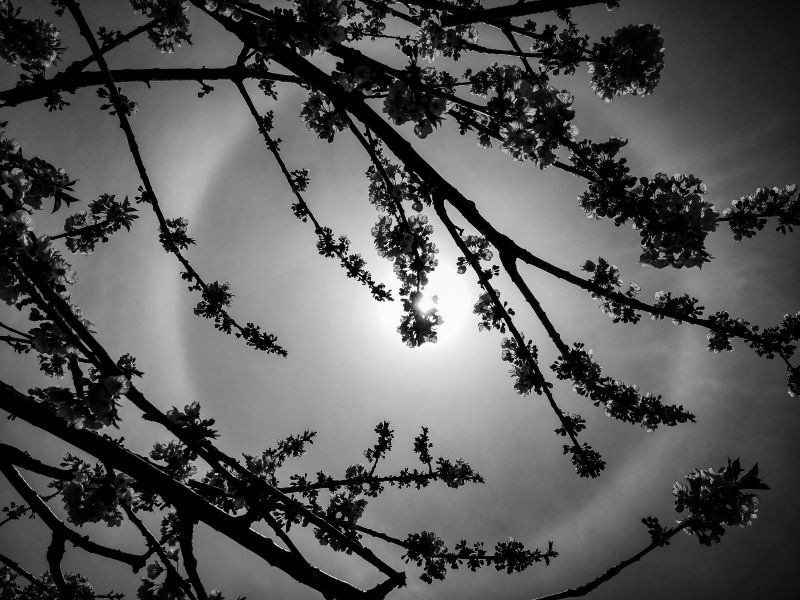
1. The sun
Obviously, you see the sun during the day. But paradoxically, we should never look at it, because direct observation damages our eyes. So never look right at the sun. Gazing at the sun directly can damage your eyes.
If you take precautions – and rig up a simple indirect viewing method for sun-watching – what do you look for? Most people look for sunspots, which can be quite large. You can also use a telescope equipped with a safe solar filter. It’s easy and fun to count the number of sunspots you see from day to day. Counting sunspots doesn’t take long, and, if you record what you see, you’ll notice profound changes over time.
The sun has an 11-year cycle, during which the dark sunspots on the sun’s surface wax and wane. We’re in an active phase of the solar cycle now, with frequent and impressive sunspots.
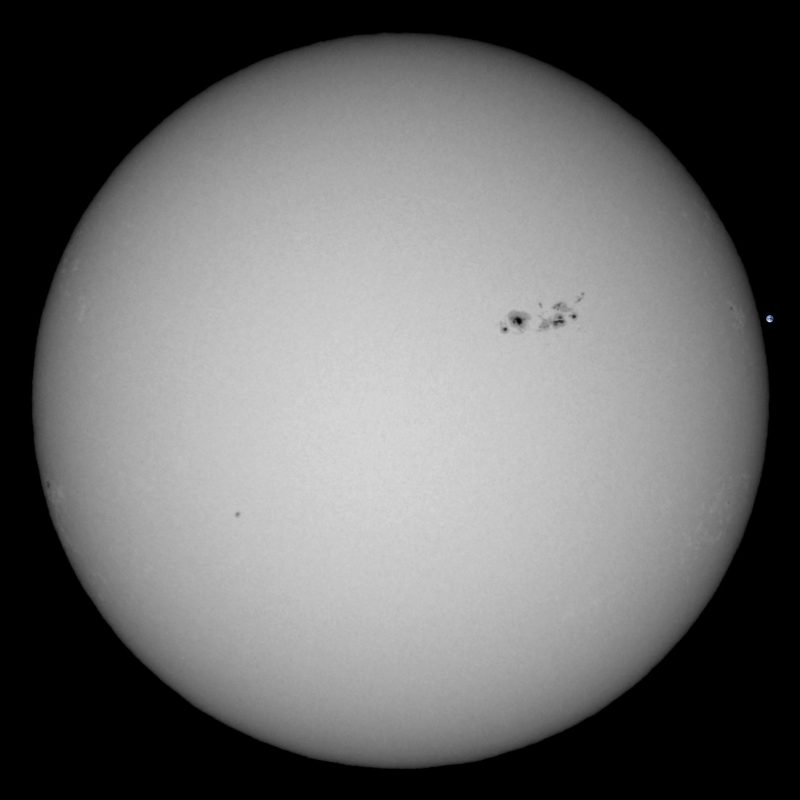
Some sun resources:
Read more: EarthSky’s Today’s Sun Activity Article
We also recommend the website Spaceweather.com, which tracks sunspots, solar activity and offers mobile phone alerts.
Read more: Do-it-yourself sunspot watching from SpaceWeather.com
Additionally, the sun gives us a whole range of atmospheric effects. Search here at EarthSky for words like halo around the sun, rainbows, iridescent clouds and the glory. Or browse Les Cowley’s great website Atmospheric Optics.
2. The moon during the day
Possibly 75% of the public is unaware that the moon is visible in the daytime sky. That’s not hard to understand, since many people nowadays spend most of their time indoors and don’t pay much attention to the sky.
In addition, the moon is not in the daytime sky every day. Like the sun, it is below the horizon half the time. Plus, even when the moon is visible during the day, it’s often a thin crescent and not easy to see. So some people are surprised to notice the moon in the daytime sky. But, voilà. If you look up frequently, you’ll see it often.
Read more: 4 keys to understanding moon phases (and daylight moons)
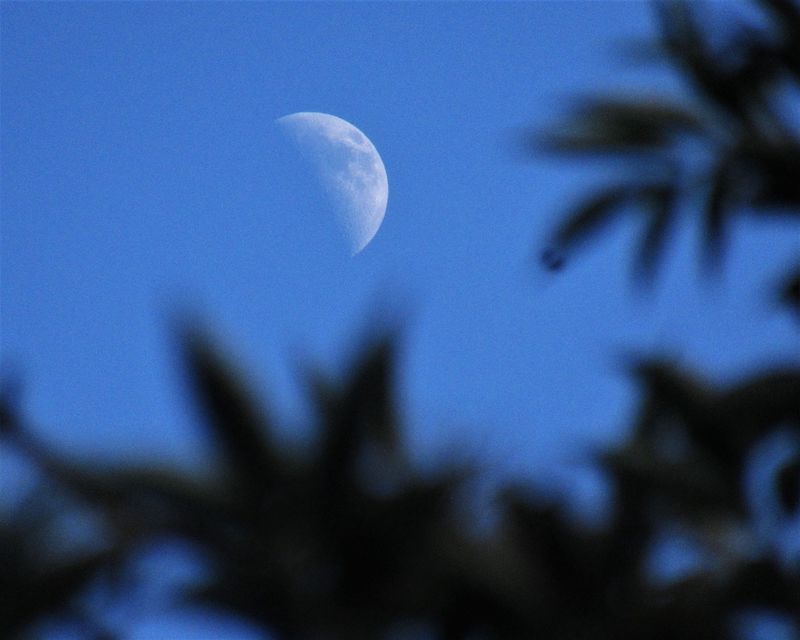
3. The planet Venus
Under the right conditions, the planet Venus is visible when the sun is also in the sky.
The image below shows Venus as a fat crescent, like a crescent moon. But Venus only appears as a crescent at certain times in its orbit, and you need some optical aid to see it.
Anyone who sees Venus in a reasonably dark sky knows it is usually dazzlingly brilliant. Observations in the daytime sky are more difficult simply because the surrounding sky is so bright during the day. So the contrast between a planet and the sky is much lower during the day, making the planet harder to see. Venus appears as a tiny white dot that often seems to “pop” out at you in a daylight sky. It helps to know where to look, especially locating it near the moon or following it from dark through twilight.
In July 2023, Venus can be found easily in the sunset direction in the evening sky. It’s exceedingly bright, but will sink lower each day until disappearing from the evening sky in early August. Venus reappears in the morning sky later in August. Some of the easiest times to spot Venus in daylight is when it’s near the moon. Check EarthSky’s guide to the bright planets to find dates the moon is near Venus.
Read more: Why is Venus so bright?
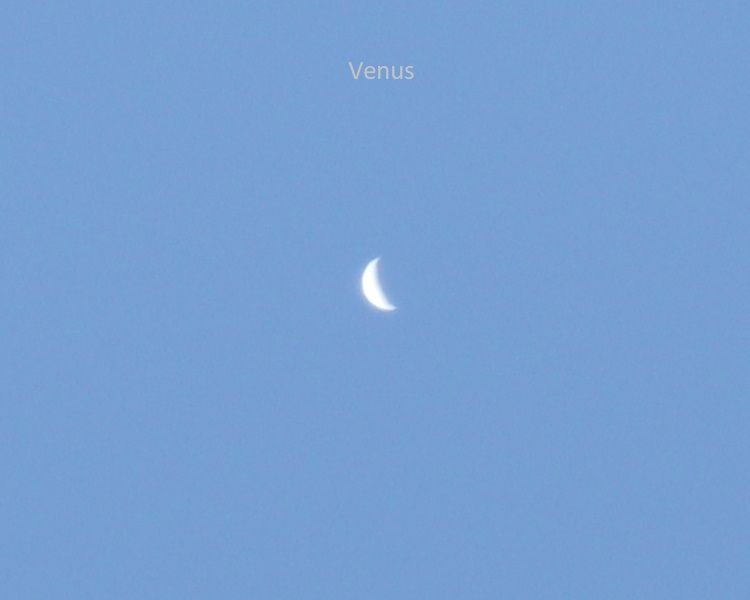
4. Earth-orbiting satellites during the day
Many people are surprised satellites are easy to see, but they are quite common in dark, nighttime skies. Seasoned observers see them frequently as nighttime falls. They look like slowly and steadily moving stars. So, at night, it’s easy to see satellites. But how about during the day?
You can see the International Space Station (ISS) during the day. The ISS is sometimes the third-brightest object visible in the sky, after the sun and moon. Why only sometimes? The position and brightness of ISS in your sky vary, depending on where the space station is with respect to you. Also, the brightness of Venus – usually the sky’s third-brighest object – varies. Sometimes ISS is brighter than Venus, and sometimes Venus is brighter than ISS.
Still, ISS is a very bright satellite. If conditions are optimum, you might see it in daylight. Spotting a visible pass of ISS in the daytime sky is a fun pastime. Eventually, you’ll be an expert at daylight ISS sightings and you’ll know when they occur over your location. Here’s an article to help you get started.
Advanced International Space Station spotting in daylight! @VirtualAstro ?? pic.twitter.com/0Hwsm2c8C9
— Sue Watson ? (@Soooisme) May 31, 2020
5. The planet Jupiter
Even some seasoned astronomers are surprised to hear mighty Jupiter is visible with the unaided eye in a sunlit sky. A word of caution here: this isn’t an easy observation. Jupiter is significantly dimmer than Venus, and finding it takes a bit more effort. Not to mention, it helps to have exceptionally good eyesight and excellent atmospheric conditions.
The best time to see Jupiter in daylight is when it’s near a “quadrature.” In other words, when Jupiter is about 90 degrees away from the sun in the sky. Plus, the sky is slightly darker there, due to a phenomenon known as polarization. This is like the arrangement of first quarter and last quarter moons. In fact, it is very helpful to have a quarter moon nearby, using it as a sky landmark guiding you to Jupiter. For example, notice the quarter moon in the image above.
When is Jupiter at quadrature next? Pretty soon, it happens on August 6-7, 2023. And count your lucky stars, the moon will be about 3 degrees from Jupiter on August 8, 2023.
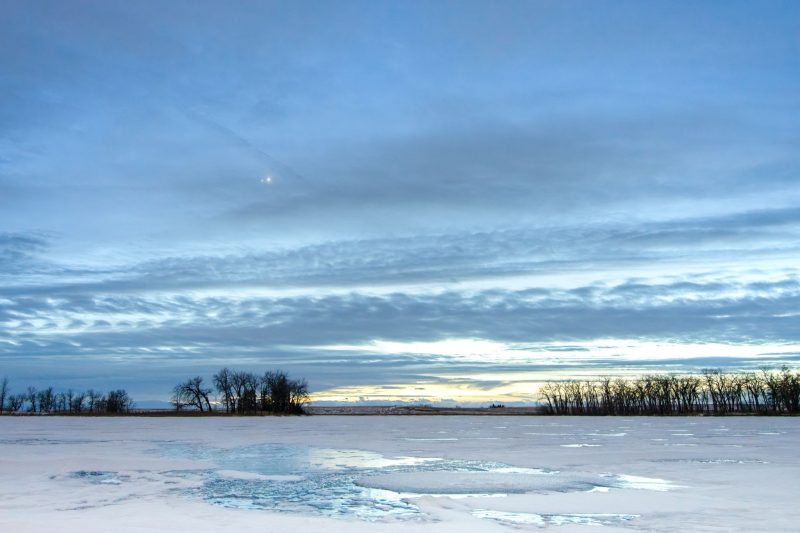
6. The planet Mars
Although only a few observers catch Jupiter in the daytime with the unaided eye, even fewer score a glimpse of Mars. However, it is possible. That’s because Mars can reach -2.9 magnitude at very close oppositions. So, the best time to see Mars during the day is around a very close opposition. Unfortunately, Mars’ next opposition is January 15, 2025, but it’s not a close one and it’ll only reach magnitude -1.4. The next very close opposition for Mars is in September 2035.
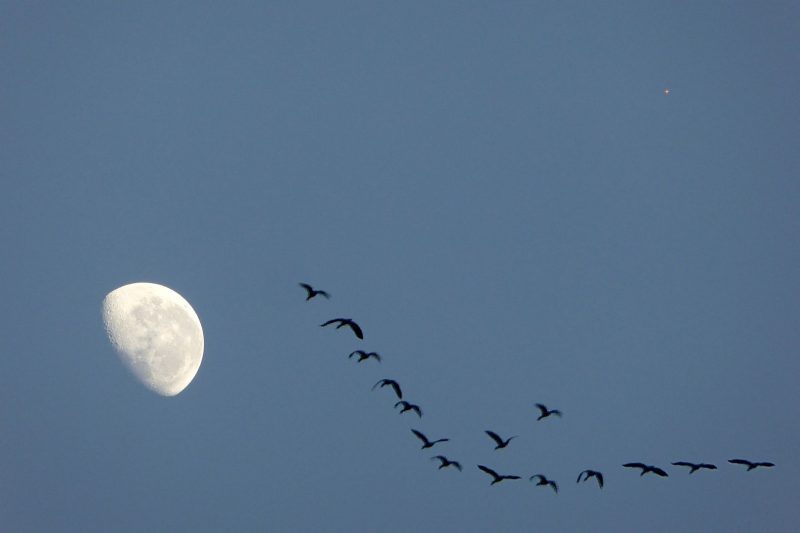
7. Stars during eclipses
This is cheating, but stars and the brighter planets are visible in the daytime sky with the unaided eye. However, this is normally only during a total solar eclipse. Such observations are of historical significance. And in fact played a crucial role in one of the first confirmations of Einstein’s theories of relativity.
A few observers report seeing some bright stars, such as Sirius, with the unaided eye in the daytime sky. These sightings require exceptional eyesight and exceptional sky conditions.
The next total solar eclipse is April 8, 2024.

8. Comets during the day
Like the meteors with which comets are sometimes confused, many bright comets have been observed in the daytime sky. In fact, although not necessarily always easy to observe, they are not all that rare. Comet McNaught was visible in daylight skies in 2007, and a very bright daytime comet preceded Halley’s Comet in 1910.
Daytime comets are more frequently observed because their orbits are predicted ahead of time and people know where to look.
Flashback to Jan 13 2007. A day light shot of the great Comet McNaught at mag -5.5!. Image courtesy Komet-ISON pic.twitter.com/zVVMBbkELh
— Con Stoitsis (@vivstoitsis) January 13, 2017
9. Daytime meteors
Rare and unpredictable, very bright meteors sometimes streak across the daylight sky. Meteors are bits of space debris vaporizing as they encounter Earth’s atmosphere. Although they occur in the high atmosphere, they are caused by small space objects. This space debris comes from comets or the asteroid belt.
One of the most famous daytime meteors occurred over the western part of North America in 1972. It was visible and recorded by observers from Utah to Alberta, Canada. Another daylight meteor was reported over California and Nevada on April 22, 2012. This meteor streaked across the daylight sky, creating a sonic boom and rattling windows. It was seen by thousands. Later, astronomers reported the meteor began as a mini-van-sized asteroid. And they located a debris field containing fragments of the meteorite, which is known as the Sutter’s Mill meteorite.
The 2013 Chelyabinsk meteor was bright enough to cast shadows in daylight. It created an exceedingly bright flash and powerful shock wave, while breaking windows in six Russian cities. Needless to say, the meteor caused a panic, and with good reason. Around 1,500 people required medical treatment, mostly from flying glass.
Spotting white-hot meteors during the daytime! #meteor ?? pic.twitter.com/uV7yfq5GhL
— AstroHardin ? (@AstroHardin) March 10, 2019
10. Daytime supernovae
Last on our list of space objects (sometimes) visible in the daytime sky are supernovae, or exploding stars. Estimates vary on the expected frequency of supernova explosions in our Milky Way galaxy. They range from as many as once every 20 years to once every 300 years. We don’t have enough records of this infrequent phenomena to give us much of an average. Many of these supernova are not even visible from Earth due to intervening gas and dust. In any event, the last supernova bright enough to see in the daytime sky was in 1572.
Betelgeuse is a likely candidate
The most likely candidate for a supernova explosion becoming visible during daytime is the star Betelgeuse. Unquestionably, it will be visible in the daylight sky when it explodes, but when that will be is still unknown. Maybe tonight, or in a few thousand, or tens of thousands, or maybe a million years from now. Many were teased in late 2019, when Betelgeuse dimmed for months leading to some speculating – or hoping – a supernova was imminent. It also recently teased us in 2023, when it became brighter than normal. Someday …
?When the object we now call Supernova 1006 first appeared on May 1, 1006, it was far brighter than Venus and visible in the daytime for weeks! This is the lingering debris field produced by that white dwarf star explosion, still expanding at over 11 million kilometers per hour. pic.twitter.com/XkD8NqCVLN
— Chandra Observatory (@chandraxray) December 20, 2021
Bottom line: A rundown of the top 10 space objects you can see – under the right conditions – with the unaided human eye during the day.
Help EarthSky keep going! Please donate what you can to our annual crowd-funding campaign.
The post Top 10 space objects to see during the day first appeared on EarthSky.
0 Commentaires